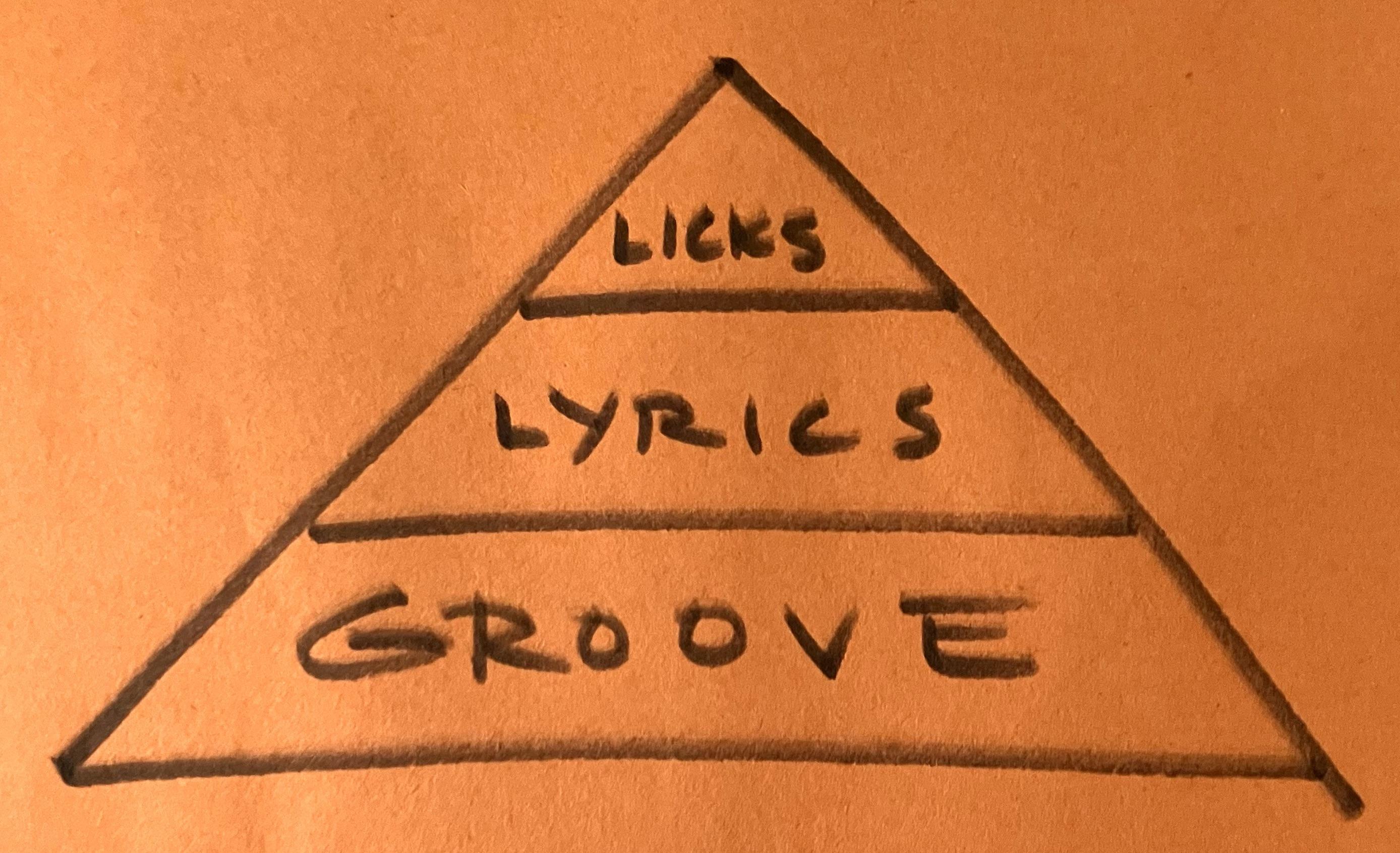Shortly before I moved to Austin, I spent two weeks working on a record at Chris Rival's My Generation studio in Boston. It's the only record I've made on two-inch tape, and it was almost worth doing the album there for the amp collection alone. But one of my favorite moments was a story Chris told between takes about recording an R&B band from somewhere in Alabama.
At one point, Chris said, he was just working on
getting sounds. Isolating the bass player's amp for a moment in the control room, Chris opened the talkback mic long enough to ask the musician, "hey, so...do you have the tone rolled all the way down on your bass?" There was a long pause, before the two-word response came: "Well...yeah." The third and fourth words, "ya dumbass," were only implied, as far as Chris could tell.
It has become increasingly obvious to me over the past few years that groove is the most important part of
playing fingerstyle guitar. Reading this assertion, your response might well be: "well...yeah." But I'm sure for much of my own learning trajectory, I was far more concerned with things like "how do I get this tricky lick to happen over this clever bass line?" and similar such top-down problems.
As my thinking has slowly shifted to a more bottom-up approach, I've become much clearer about what to worry about when practicing as well as where to focus when performing. Given that I
primarily play songs, with words, my little hierarchy of priorities puts groove at the bottom of the pyramid, singing in the middle, and any improvising, fills or other cool-guitar hijinks at the top. Meaning, if you dig the shape of a pyramid, groove, as the foundation of the whole operation, takes up the majority of my attention, followed by successfully delivering the lyrics. The fun guitar business takes up the least of my attention, being a commentary on and enhancement of the first two
things.

Groove matters whether you're playing an accompaniment or playing a solo; in fact, the groove by definition needs to underpin everything in a onward, endless way. All very well and good, you may say, but how exactly does one begin to focus on the
groove? Thanks for asking; that's what I talk about in today's Youtube video. Specifically, I explain how to use left-hand damping to create something called ghost notes. It's far easier to show than to write about; you can find the lesson at the link below:
One Simple Technique to Elevate Your Groove
Unsurprisingly, there are
really just three things we focus on in my Fingerstyle Five membership: groove, repertoire and improvisation. This month, we've been looking at how to improvise on "How Long Blues" by adding the major third of each chord in the song to the pentatonic scale. Starting in March, we'll focus on using intros, outros and other arranging tools to turn this basic eight-bar blues into a full-length, performance-worthy arrangement. To build your blues repertoire, dial in your groove and start improvising,
join us now:
The Fingerstyle Five
More soon,
David